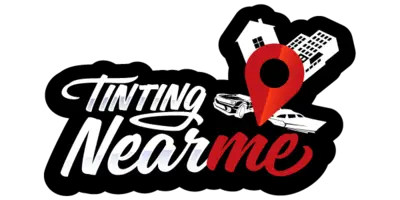2024 Virginia Legal Tint Laws Explained
Imagine you’ve just purchased a sleek, new car and you’re considering adding a window tint for that extra touch of style and privacy. However, before you make any decisions, it’s crucial you understand the 2024 Virginia Legal Tint Laws. These laws aren’t just guidelines – they’re enforceable regulations that dictate how dark your window tint can be, which windows can be tinted, and even the tint’s reflectivity. If you’re not careful, you could find yourself facing hefty fines or even having to remove the tint altogether. So, why not take a moment to better understand these laws? After all, it’s not only about compliance, but ensuring your vehicle meets your needs while respecting legal boundaries.
The information on myeyerx.net isn’t legal advice; consider it a starting point. Always verify with local and state authorities, as the final decision rests with you. We are not lawyers. For specific legal guidance, we can refer you to legal experts. Remember, knowledge of both state and local laws is essential, and even law enforcement might not be fully updated. We aim for accuracy but advise double-checking for the latest regulations.
Key Takeaways
Key Takeaways
Key Takeaways
- Virginia has enforceable regulations on window tinting, which dictate the darkness of the tint, which windows can be tinted, and the tint’s reflectivity.
- Violating these tint laws can result in fines and the removal of the tint, as the laws are designed to ensure safety and visibility for all road users.
- The permissible tint darkness levels in Virginia are that front side windows on passenger vehicles must allow more than 50% of light in, while back side and rear windows must permit over 35% of light.
- Specific tint laws for vehicles state that front side windows on passenger vehicles must have a Visible Light Transmission (VLT) of more than 50%, while back side and rear windows can have a darker tint with a requirement of over 35% VLT.
Need Help Getting a Medical Exemption?
Our Doctors Are Here For You!
MyEyeRx was established with the objective of simplifying the complex landscape of state regulations pertaining to legal tint medical exemptions for window tinting. For individuals seeking to navigate these regulations without resorting to a do-it-yourself approach, we offer a streamlined solution. Our team includes qualified medical professionals who are available to conduct consultations via Zoom. These sessions are designed to assess your eligibility for a medical exemption, ensuring a personalized and efficient process for acquiring the necessary documentation.
Understanding Virginia’s Tinting Codes
In order to stay within the law in Virginia, you need to know that your front side windows on passenger vehicles must allow more than 50% of light in, while your back side and rear windows must permit over 35% of light. These are part of the Virginia window tint laws, which are designed to ensure safety and visibility for all road users.
Understanding Virginia’s tinting codes is not just a matter of adhering to the law, it’s also about knowing what’s safe for you and other drivers. The state tint laws in Virginia are enforced by law enforcement and are there to protect you.
Car window tinting can have many benefits, including reducing glare and heat, and increasing privacy. However, Virginia tint laws prohibit tinting or shading films that reduce the total light transmittance of your car windows to less than 35% for rear side windows or rear windows. This is part of the window tinting rules that ensure enough light is allowed in for safe driving.
It’s also important to note that tinted headlights and tail lights are illegal under Virginia window tint laws. This can result in penalties, so it’s best to avoid them.
Specific Tint Laws for Vehicles
While you’re considering tinting your vehicle windows in Virginia, it’s crucial to know the specific tint laws that apply to different types of vehicles. Under Virginia law, the rules for car window tint vary based on the type of vehicle and the window location.
For passenger vehicles, the Window Tint Rules state that front side windows must allow more than 50% of light in. This means that the window film used on these windows should not have a Visible Light Transmission (VLT) of less than 50%. In contrast, back side windows and rear windows are allowed to have a darker tint, with the law requiring them to let in more than 35% of light.
On the other hand, multi-purpose vehicles can have a slightly darker tint on their front side windows, with a maximum of 50% VLT permitted. As for the rear side windows, Virginia law does not specify a limit on the VLT, providing more flexibility for these vehicles.
The Window Tint Rules also address the windshield. Full windshield tinting is prohibited in Virginia. However, a non-reflective tint is allowed above the manufacturer’s AS-1 line.
Remember, tinting headlights and tail lights is strictly illegal in Virginia. This is due to the potential danger it poses by preventing light from passing through.
Penalties for violating the tint laws are serious. They can result in traffic infractions or even misdemeanor offenses, with fines and potential jail time for subsequent violations.
Keep these 77 window tint rules in mind when choosing a window film for your vehicle in Virginia.
Reflectivity and Tint Regulations
Navigating the nuances of reflectivity and tint regulations in Virginia, you’ll find that the state law stipulates the reflectivity of tinted film on both front and back side windows must not exceed 20%. This means the level of light reflected from the tinting on your car’s side windows, whether it’s the front or back, must remain within this specified limit. The law is designed to ensure safety by reducing excessive glare that could potentially impair visibility for other drivers.
Now, it’s important to remember that not all tinting films are created equal. Certain types of films have metallic elements incorporated into them that can help to reflect incoming light, thereby reducing glare and heat. This can provide a more comfortable and safer driving environment.
However, you should be aware that the Virginia law has specific restrictions when it comes to the type of tinting film allowed on vehicles:
- Tinting film producing a holographic or prism effect is not allowed.
- Tinted films that change the natural light properties are not permitted.
- The use of metallic or mirrored tints is also prohibited.
Understanding these laws can help you make informed choices when considering tinting your car’s windows. Adhering to them ensures you maintain a legal vehicle while maximizing the benefits of window tinting. Remember, the goal of these laws is to balance the comfort and privacy that tinted windows provide with the necessity of safety for all road users.
Additional Virginia Tinting Rules
Diving deeper into Virginia’s tinting rules, you’ll find that driving a motor vehicle on the highway with any sign, poster, or colored material on the windshield or windows is deemed unlawful. This includes any type of car tint that doesn’t align with the state laws. The Department of Motor Vehicles (DMV) is strict on these rules and regulations, as they’re designed to ensure that you, the driver, have optimum visibility.
However, there are some exceptions to these tint laws you need to be aware of. Stickers or decals used by counties, cities, and towns in lieu of license plates are allowed, as long as they’re affixed at a designated location on the windshield. Additionally, there’s provision for an optically grooved clear plastic right-angle rear view lens to be attached to one rear window, provided it doesn’t exceed certain dimensions.
When it comes to the degree of darkness allowed on your windows, the law is clear. For any window: any darkness can be applied, but it must not reduce total light transmittance to less than 35 percent. This is measured from the manufacturers AS-1 line.
What if you need a darker tint due to medical reasons? There are tint exemptions in Virginia that can be acquired if you have specific medical conditions. To get this, you’ll need to complete a Sun-Shading Medical Authorization Application. Once approved, this allows you to have a darker windshield tint than the state laws typically permit. Remember, these laws are here to keep everyone on the road safe. So, always adhere to them.
If you would like to bypass having to fill out paperwork and dealing with the state, we can help you get an online medical exemption for window tint in Virginia.
Navigating Tint Law Penalties
Given that you’re now aware of Virginia’s tint laws, it’s crucial to understand the penalties you could face if you violate these restrictions, which can range from traffic infractions to misdemeanor offenses, with potential fines and even jail time. If you don’t adhere to the specifics of what’s allowed to tint, you’re risking more than just a slap on the wrist.
Firstly, you’d receive a Class 3 misdemeanor for your initial violation, which carries a maximum fine of $500. However, the stakes get higher with subsequent offenses. A second violation within a year is considered a Class 2 misdemeanor, with a fine up to $1,000 and potential jail time.
Here are some key points to remember:
- Ensure you have your windows tinted within the visible light transmission (VLT) percentages stipulated by law.
- You need to certify your film products, making sure they meet the state’s standards.
- Full windshield tinting is prohibited, and non-reflective tint is only allowed above the AS-1 line.
Neglecting these regulations isn’t worth the cost or the potential jail time. If you’re planning to tint your windows, take the time to familiarize yourself with the 2024 Virginia legal tint laws explained in this article and navigate tint law penalties effectively. With due diligence and respect for the law, you can enjoy the benefits of tinted windows without the worry of legal repercussions.

Don't want the hassle? Let us take care of your exemption for you!
MyEyeRx.net is here to help you streamlines the process of obtaining a medical exemption for window tint online. Explore our services to easily transform your window tint from non-compliant to legally approved!
Because of the differences in each of the 50 states, we’ve crafted distinct guides for securing window tint medical exemptions for each of the individual states.

Toriano (Tory) Dewberry
Become one of the many satisfied clients Toriano has assisted in obtaining a medical exemption without stepping out of their homes. Click the button below to begin and discover if you're eligible for a medical exemption.

Toriano (Tory) Dewberry
Become one of the many satisfied clients Toriano has assisted in obtaining a medical exemption without stepping out of their homes. Click the button below to begin and discover if you're eligible for a medical exemption.
Frequently Asked Questions (FAQ'S)
What Is the Darkest Legal Tint in Va?
In VA, the darkest legal tint for your front side windows is 50% VLT, and for the rear side windows, it’s 35%. However, the tint’s durability, installation process, and costs can vary based on the brand. While it offers privacy and UV protection, safety concerns arise if it’s too dark. Remember, improper tint removal or maintenance can lead to traffic infractions. So, consider these aspects before choosing your tint.
Is 15% Tint Illegal in Virginia?
Yes, a 15% tint is illegal in Virginia. You’re pushing the envelope with that level of darkness. It hinders visibility, raises safety concerns, and impacts your insurance. The installation process is tricky and it won’t last forever. Plus, removing it can be a pain. Different brands offer varying UV protection and aesthetics at diverse costs. Remember, it’s not always about looking cool, but staying within the law.
Will 20 Tint Pass Inspection in Virginia?
Yes, 20% tint will pass inspection in Virginia. It’s a great choice that offers UV protection and enhances your car’s aesthetics. However, understand the visibility issues that could arise, especially at night. The durability and cost implications are worth considering. Be aware, too, of potential safety concerns and regulatory penalties. Consider all tinting alternatives before installation to ensure you’re not just compliant, but safe and satisfied with your decision.
Can Police Pull You Over for Dark Tint in Virginia?
Yes, in Virginia, police can indeed pull you over if they suspect your car’s window tint is too dark. Officers use their discretion and tint detection methods to assess visibility concerns. If your tint falls outside the legal limits, you’re facing potential traffic violations and legal consequences. It’s crucial to understand these laws to ensure vehicle safety. Despite tinted windows benefits, always seek legal advice if unsure about your tint’s legality.

MyeyeRx.net
Ensuring your tint is not just about style, but legality and safety.
Let us guide you through the maze of state regulations to legal clarity.

Conclusion
In 2024, Virginia’s tint laws are clear-cut and strict, so you’d best keep ’em in mind. Did you know that over 5,000 drivers were ticketed last year for illegal tinting? That’s a hefty fine you can easily avoid. Don’t get caught out. Stay informed, stay legal, and keep your hard-earned money in your pocket, not the government’s. Remember, adhering to these laws isn’t just about avoiding penalties, it’s about ensuring safety on the road.
Looking to find a Reputable Window Tint Company In Virginia?
Checkout Tintingnearme.com to Find A Local Tint Shop
After learning about window tint laws, the next step is to find a trusted local window tinting shop. Tinting Near Me offers a selection of reputable shops knowledgeable in both quality tinting and legal standards, including medical exemptions.
Choose a shop from their list for expert service that meets legal requirements and enhances your vehicle’s compliance and protection.


